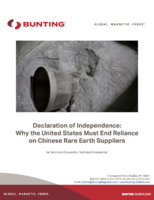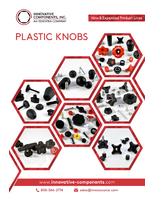Automakers urge drivers and passengers to buckle up.
Share:
Press Release Summary:
Going into heavy travel period, Alliance of Automobile Manufacturers urged people to buckle up and urged Congress to enact federal sanctions encouraging states to strengthen safety belt enforcement laws into primary laws. Under primary enforcement laws, officers can stop motorist whenever they observe safety belt law being broken, making these violations the same as all other traffic law violations. NHTSA figures show that jurisdictions with primary laws generally have higher belt use rates.
Original Press Release:
Automakers Urge Drivers and Passengers to Buckle Up; Urge More Federal Action to Boost Safety Belt Use
WASHINGTON, -- Going into the heavy travel period that includes the Independence Day holiday weekend, the Alliance of Automobile Manufacturers today not only urged passengers and drivers to buckle-up, the group also urged Congress to enact federal sanctions encouraging states to strengthen safety belt enforcement laws into primary laws. Under primary enforcement laws officers can stop a motorist whenever they observe a safety belt law being broken, making these violations the same as virtually all other traffic law violations. Weaker, secondary enforcement laws require an officer observe another traffic violation before stopping an un-belted motorist.
"Safety belts are the most important safety equipment in any vehicle," said Alliance President and CEO Dave McCurdy. "Since several states have exceeded a 90 percent usage rate we know that near-universal belt use is possible.
"At the same time, government statistics show that 45 million vehicle occupants still do not buckle-up, and that results in 38 fatalities during an average day," McCurdy added.
Automakers have led efforts to increase safety belt use by spending more than $120 million in the past 25 years alone. This work has helped bring the national safety belt use rate from 1994's 58 percent to an all-time high in 2009 of 84 percent, according to the National Highway Traffic Safety Administration (NHTSA). 2009's rate is approximately 70 percent above the usage rate 30 years ago.
"We've made tremendous progress, but to move forward we need federal highway fund sanctions that strongly encourage states to upgrade their laws," McCurdy stated, noting that this tactic has already been used to save lives by establishing a 21-year-old drinking age and a .08 BAC drunk driving standard.
This year Kansas became the 31st state (including D.C.) to enact a primary enforcement law and Georgia removed the pickup truck exemption from its primary belt use law. Primary belt laws now cover more than three-quarters of the U.S. population, and NHTSA figures show that jurisdictions with primary laws generally have higher belt use rates. In 2008 safety belts saved 13,250 people.
Twenty-two states have use rates below the national average. The lowest include Wyoming at 67.6 percent, New Hampshire at 68.9 percent and South Dakota at 72.1 percent. Wyoming and South Dakota have secondary enforcement belt use laws while New Hampshire has no adult belt requirement.
"Including a primary belt law highway fund sanction in the next transportation bill could be among the measure's most important safety elements," added McCurdy. The Alliance has supported such a provision in the legislation advanced by House Transportation & Infrastructure Committee leadership. "We will continue to push for this," McCurdy stated.
The Alliance of Automobile Manufacturers is a trade association of 11 car and light truck manufacturers including BMW Group, Chrysler, Ford Motor Company, General Motors, Jaguar Land Rover, Mazda, Mercedes-Benz, Mitsubishi Motors, Porsche, Toyota and Volkswagen.
CONTACT: Wade Newton of the Alliance of Automobile Manufacturers,
+1-202-326-5571
Web Site: http://www.autoalliance.org/




